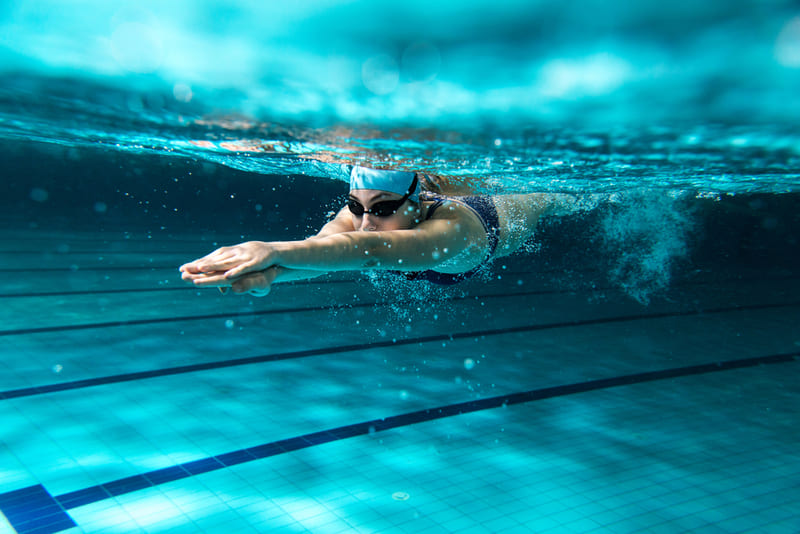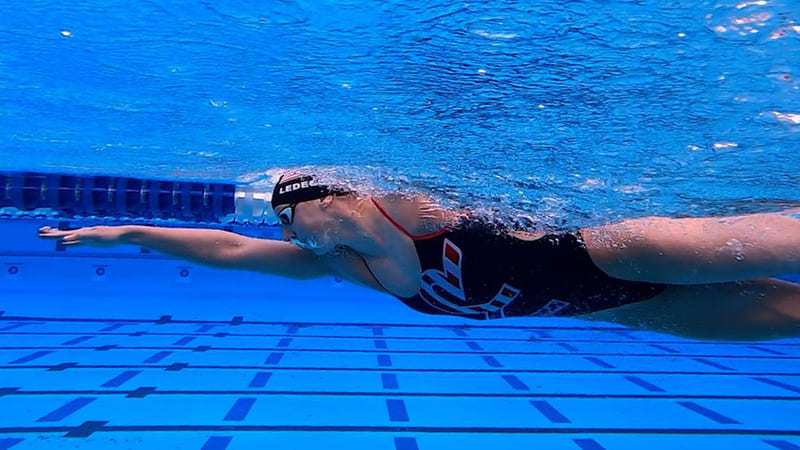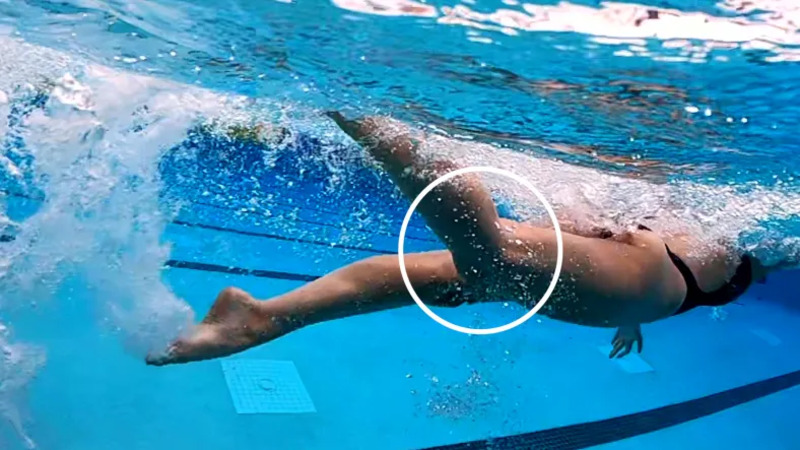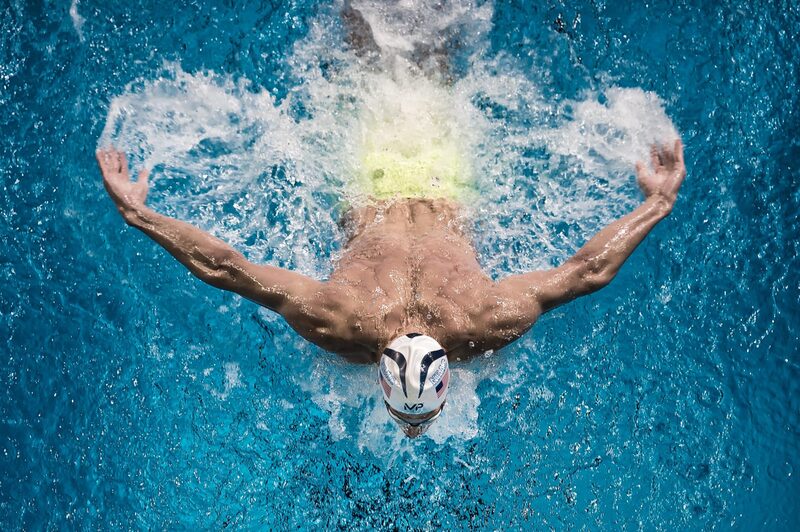The butterfly stroke, also known as the butterfly swim, is undeniably one of the most captivating and powerful swimming techniques. However, its technical demands can present a challenge for aspiring swimmers. But fear not! With dedication, proper guidance, and the right butterfly stroke tips, you can master this graceful yet demanding stroke. Swim Time Log, your one-stop platform for all things swimming, dives deep into eight key areas to elevate your butterfly stroke to the next level.
1. Swim with a Flatter Body Position
Imagine yourself gliding on top of the water. In the butterfly stroke, maintaining a flatter body position is crucial for efficiency and minimizing drag. Here’s how:
- Engage your core: A strong core keeps your hips high in the water, preventing a sagging body position that can hinder propulsion.
- Kick from your core, not your knees: Focus on initiating the kick from your core and hips, allowing a natural wave-like motion to travel down your legs. Avoid bending your knees excessively, which can create drag.
- Keep your head down: Looking straight ahead with a slightly downward gaze helps maintain a streamlined position.

Swim with a Flatter Body Position
2. Reduce Chin Lift When Breathing
Breathing in the butterfly stroke requires a quick turn of the head to the side. However, excessive chin lifts can disrupt your body position and momentum. Aim for a quick and efficient breath, minimizing the lift of your head. Here are some tips:
- Rotate your core, not just your head: Initiate the head turn by engaging your core muscles, allowing a natural rotation of your upper body for a quick breath.
- Exhale underwater: Make sure to exhale completely underwater before turning your head for a breath. This prevents water from entering your mouth and avoids the need for a large head lift.
- Breathe late in the stroke cycle: Time your breath to the late pull phase of your stroke, when your arms are almost recovered above the water.

Reduce Chin Lift When Breathing
Read more: Butterfly Arm Stroke Movement
3. Breathe Late in the Stroke Cycle
As mentioned earlier, timing your breath is crucial in the butterfly stroke. Breathing too early disrupts your stroke rhythm and momentum. Here’s why breathing late is important:
- Maximizes power: By breathing late in the stroke cycle, you utilize the powerful pull phase to maintain momentum before turning your head for a breath.
- Maintains body position: Breathing early can cause your hips to drop, disrupting your streamlined body position.
- Improves efficiency: A well-timed breath ensures a smooth transition between breathing and continuing the stroke cycle.
Related blog: 5 Ways to Improve Your Butterfly Swim Technique
4. Kick Continuously
Unlike the flutter kick used in freestyle, the butterfly stroke requires a continuous dolphin kick. This powerful underwater leg movement propels you forward and generates most of your speed. Here’s how to ensure a continuous kick:
- Focus on a smooth up-and-down motion: Engage your core and hips to initiate a wave-like kicking motion with your legs together.
- Maintain ankle flexibility: Point your toes and keep your ankles loose for efficient kicking.
- Coordinate your kick with your arm stroke: The kick should be synchronized with your arm pull, creating powerful and rhythmic propulsion.

Kick Continuously
5. Train Shorter Distances for Better Technique
While building endurance is important, focusing solely on long distances in the butterfly stroke can lead to technique flaws. Here’s why training for shorter distances can benefit you:
- Isolate technique errors: By focusing on shorter distances, you can pay closer attention to your body position, breathing technique, and kick timing.
- Practice proper form: Swimming shorter distances allows you to concentrate on maintaining proper butterfly stroke tips throughout the stroke cycle.
- Build a strong foundation: Mastering the technique at shorter distances lays the groundwork for efficient and powerful swimming over longer distances later.
6. Incorporate Butterfly Drills to Master Stroke Timing
Butterfly stroke drills are isolated exercises that help you focus on specific aspects of the stroke and improve timing. Swim Time Log offers a variety of drills you can incorporate into your training routine, such as:
- Arm recovery drills: Focus on the powerful upward and backward sweep of your arms while keeping your body streamlined.
- Kick drills: Practice the dolphin kick with a kickboard or fins to isolate your leg movement and refine your technique.
- Sculling drills: Sculling drills help develop a strong core and upper body strength, crucial for efficient butterfly swimming.
7. Increase Core Strength for More Power
A strong core is the foundation of a powerful and efficient butterfly stroke. Here’s how core strength benefits your butterfly stroke:
- Maintains body position: A strong core helps you maintain a flat body position and minimizes drag in the water.
- Initiates powerful movements: Core strength allows you to engage your hips and core to initiate the powerful pulling motion of your arms and the wave-like motion of your kick.
- Improves stability: Core strength enhances overall body stability, leading to smoother and more coordinated movements throughout the stroke cycle.

Increase Core Strength for More Power
Here are some core strengthening exercises you can incorporate into your training:
- Plank variations: Perform variations of plank exercises, such as side planks and high planks, to target different core muscles.
- Crunches and sit-ups: Classic core exercises like crunches and sit-ups can help build core strength and endurance.
Read more: 2 Butterfly Kick Swimming Drills: Building Power from the Core
8. Practice Makes Perfect
There’s no substitute for consistent practice when mastering the butterfly stroke. Here are some additional tips for maximizing your training sessions:
- Warm-up and cool-down: Always include a proper warm-up before starting your butterfly drills or workout and a cool-down routine afterward.
- Seek guidance: Consider working with a qualified swim coach who can analyze your technique and provide personalized butterfly swim tips to address your specific needs.
- Record yourself: Filming yourself a swimming butterfly can help you identify areas for improvement and track your progress over time.
By incorporating these butterfly stroke tips into your training regimen, combined with dedication and consistent practice, you’ll be well on your way to mastering this captivating and rewarding swimming technique. Swim Time Log is here to support you every step of the way. We offer a wealth of resources, including:
- Video tutorials: Learn the intricacies of the butterfly stroke with detailed breakdowns and video demonstrations.
- Sample butterfly stroke workouts: Explore a variety of training routines designed to improve your butterfly technique, speed, and endurance.
- Online community forum: Connect with fellow swimmers, share experiences, and get expert advice from coaches and trainers.
Visit our website to start your butterfly stroke journey and unlock the magic of swimming!
Read more: Discover Information About Butterfly Stroke: From History to Technique and Benefits
AUTHOR
Sang Nguyen
Sang Nguyen is a former national swimmer for Vietnam who has transitioned into coaching. With a passion for fostering a healthy swimming community and connecting like-minded individuals,......Read More
BLOG
Maybe You Are Interested
Butterfly Arm Stroke Movement
The butterfly stroke, with its captivating undulations and powerful movements, requires a refined butterfly arm...
2 Butterfly Kick Swimming Drills: Building Power from the Core
The butterfly stroke, known for its powerful undulations and graceful movements, relies heavily on a...
5 Ways to Improve Your Butterfly Swim Technique
The butterfly stroke, also known as the fly swimming technique, is a captivating display of...
8 Butterfly Stroke Tips to Help You Improve Your Skill
The butterfly stroke, also known as the butterfly swim, is undeniably one of the most...
Discover Information About Butterfly Stroke: From History to Technique and Benefits
The butterfly stroke, also known as butterfly swim or fly swim stroke, is one of...
Competitive Swimmer Diet in Olympics: Fueling Your Gold Medal Dreams
Competitive swimmers push their bodies to the limit, demanding a competitive swimmer diet that provides...